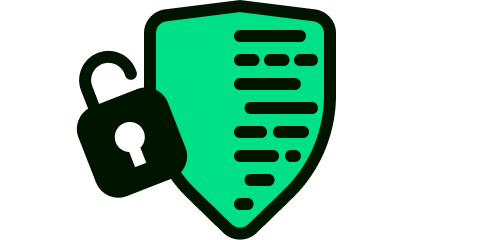
Adaptive Transit
The symbiosis of Peering & Transit
Control your traffic flows
Adaptive Transit equips networks with all essential tools to optimize their Internet traffic according to their interconnection strategy. Leveraging NL-ix's Peering and Transit platforms, customers gain access to a distinctive blend of Transit routes. By combining these platforms, Adaptive Transit delivers significant advantages to networks of all sizes, ensuring smooth and effective operations for both larger enterprises and smaller organizations.
Direct access to major ISP & Content Networks
Adaptive Transit offers customers access to ~650 NL-ix peers, ~2.400 networks reachable via a single hop, and a consolidated feed of Transit upstreams, providing connectivity to all major ISP and Content networks across Europe.
Check here for the complete list of Connected Networks


Two VLANs
Adaptive Transit combines the three platforms (Peering, Open Peering and Joint Transit) onto a single port using two VLANs: the NL-ix Peering VLAN and a Transit VLAN.
The NL-ix Peering VLAN provides the Peering service, the Transit VLAN is used to setup BGP between the customer router and the Transit routers and exchange traffic between them.
NL-ix offers us the opportunity to send traffic with different VLANs and with different BGP communities without the hassle of managing prefix lists.
Marc Guardiola Radersma - CTO @ Solvinity

Additional Services
Find out more about our additional Setup Support, Premium Peering and Anti-DDoS (NaWas) services or find out more technical details with our Support page.
The Service Description for Adaptive Transit and all other NL-ix services can be downloaded here
-
Solvinity about NL-ix
"NL-ix offers us the opportunity to send traffic with different VLANs and with different BGP communities without the hassle of managing prefix lists."
Marc Guardiola Radersma - CTO @ Solvinity
Read more -
Bit about NL-ix
"Being part of an Exchange is about the quality of the network, making it essential to align with a partner like NL-ix that understands the evolving requirements of the digital landscape."
Alex Bik - CEO @ BIT
Read more
Frequently asked Questions
What is the main difference between Adaptive Transit and NL-ix Transit?
Adaptive Transit empowers users with complete control to route and filter their traffic according to specific requirements by using the NL-ix Route Server Configurator (Peering) or BGP communities (Peering + Open Peering) , while NL-ix Transit is a fully managed service where NL-ix pre-configures the optimal routes, saving users the trouble of difficult BGP configuration.
How does Adaptive Transit offer build-in redundancy?
Peering and routing prefixes are redundantly covered within the Transit sessions. With multiple sessions to geographically divers routers and Route Servers, Adaptive Transit offers built-in redundancy.
In total, Adaptive Transit provides five BGP sessions:
- Primary Joint Transit router
- Secondary Joint Transit router
- Open Peering router
- Primary NL-ix Route Server
- Secondary NL-ix Route Server
Why is Peering preferred over IP Transit?
When a network router receives a request, it consults its routing table to determine the shortest path to the requested information. Based on the available information, the router forwards the request to the next router in its path towards the end destination. Each router makes its routing decisions based on its own knowledge and information. If there is a direct Peering relationship with the destination network, it will be utilised. However, if such a direct link is absent, the data is sent through intermediary routers and networks until it reaches its final destination. This process is commonly referred to as IP Transit. It's important to note that each router along the way introduces processing time, leading to increased latency and uncertainty about the path the data will take. Regardless of how your business is connected to the Internet, you will inevitably rely on IP Transit to some extent. However, to achieve a more predictable and direct path, it is advantageous to leverage direct peering relationships whenever possible, minimizing the number of hops and reducing latency.
What are the available bandwidths for Adaptive Transit?
Adaptive Transit is available from 100 Mbps up till 100 Gbps in flat fee but there are also options for a metered variant. With link aggregation multiple physical connections can be bundled into a single logical connection.
Where can I find information in regards my Onboarding and Configuration
If you have placed an order at the NL-ix you will receive an 'order confirmation' mail. After the order confirmation has been send, the NL-ix provisioning team gets to work to deliver your order.
When the order has been delivered, for normal products usually within 10 working days after the order confirmation, the provisioning team will send an ‘order delivery’ email. This email contains all details you need to setup your connection. The delivery date is also the start date of invoicing.
You can find more information in regards the Onboarding and Configuration proces at Support
Need help?
Interested in what Transit from NL-ix can do for your organisation or looking for a demo?
sales@nl-ix.net or call +31 (0)70 3120710
Or leave your details and we will contact you!